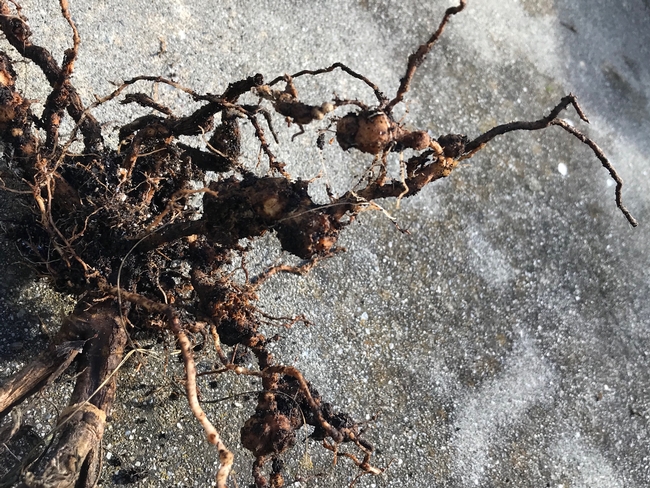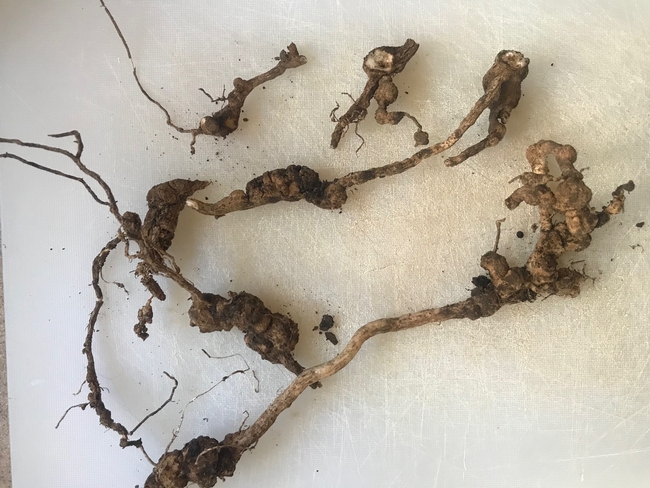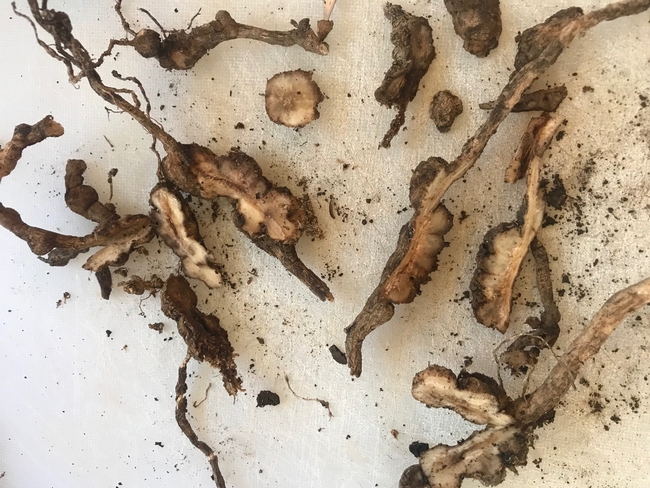- Author: Karen Metz
In February I took out the last of my tomato plants. Some I had removed in December when we were threatened with a multiple day freeze. But I had left the Sweet 100, Yellow Pear and an Early Girl that was tangled up between those two. The Sweet 100 and the Yellow Pear had done well in spring, but were very lackluster in summer and only seemed to start producing again in late fall. That is why I had left them in the ground so long, trying to get every last fruit that I could.
I pulled them up and noticed that the roots seemed odd, with multiple swellings. I hit the books, mainly Pests of the Garden and Small Farm by Louise Flint, a University of California Publication. I also went to the UC ANR IPM website and found that I was probably dealing with Root Knot Nematodes, Meloidogyne spp. These are tiny worms that lay eggs and feed in plant roots. They have a six-stage life cycle. Their presence stimulates the roots to make more cells which lead to the swellings or knots that we see. The nematodes can also move out into the soil. I did open up some of the lesions, see picture. I couldn't see any of the pinpoint sized females which can sometimes be found and are described as being pearly. I did not have a dissecting microscope and I suspect February is not the optimum time to see them.
A root knot nematode infestation reduces a plant's ability to take up water and nutrients, which explained why the plants didn't do well in the stress of the summer heat. It didn't kill the plants but it did decrease vigor and yield. Root knot nematodes are very common in California soil. They grow vigorously in warm temperatures. I suspect if I had pulled the plants up earlier, when temperatures were warmer, the knots would have been even more impressive.
There are many management techniques to decrease root knot nematode levels and many seem to work better in combinations. Allowing an area to go unplanted or fallow for one to two growing seasons can decrease levels. You do have to keep the area weeded as many weeds are host to the root knot nematode. A very extreme form of soil solarization is helpful but very difficult to achieve the high temperatures needed.
Planting French Marigolds, Tagetes patula, as a rotation crop with a thick solid planting in an infected area, can decrease most root knot nematode levels. Just interplanting them between other vegetables was not effective.
Planting resistant varieties seems to be the key. Look for the letters following the variety name when you buy the tomato seeds or seedlings. You will frequently see V and F indicating resistance to Verticillium and Fusarium diseases. But you need to look for varieties that also have an N to denote Nematode resistance. They are a fair number out there. Celebrity and Better Boy are resistant varieties and generally fairly easy to find. I found that only one of the varieties that I had grown last season was nematode resistant; that was Carmello which had done well.
So, I think I will not grow any tomatoes in their usual raised bed home this coming season. I'll try and plant French marigolds in their place. Since I have to have some tomatoes, I will grow a few in containers this year. The following year I will try to plant resistant varieties back in my raised bed. I will also try to do better with irrigation since water stressed plants are more sensitive to root knot nematode damage. I will also try and remove plants from the soil much earlier. Hopefully this combination of things will give me better results in the future.
For more information on Root Knot Nematodes please refer to the Nematode Pest Note at ipm.ucanr.edu






